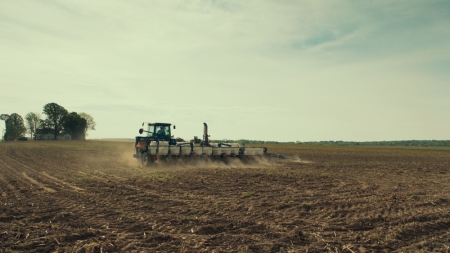Monrovia, Indiana / Frederick Wiseman / 2018 / 
Active Ingredients: Rural landscapes; Portrait of everyday life
Side Effects: Lack of a unifying theme or institution

[Monrovia, Indiana plays this month at Boston’s MFA.]
Nearly every year like clockwork, it seems, master documentarian Frederick Wiseman releases another great film examining a particular location, community, or institution. His methods are rigorous and his eye is unerring, making his body of work one of the most consistent and important in American cinema. If you’ve seen Ex Libris or In Jackson Heights, or indeed any of his other nearly 50 feature films, you’re familiar with the way he works, the way he constructs detailed portraits from discrete moments like mosaics. But Wiseman’s new empathetic look at small town Middle America shows that each of his films reveals its own unique insights.
The rural setting of Monrovia, Indiana immediately differentiates it from Wiseman’s previous two, New York-set features. The film begins with a lovely, lyrical montage of blue skies, green grass, and quiet country homes. For nearly two decades Wiseman’s films have documented crowded city streets or institutions defined by their interior spaces; the openness to the landscape in this film seems to allow the camera welcomed room to breathe, affording it its own unique aesthetic tool.
The open landscapes of Monrovia, Indiana, become a thematic touchstone as well as a visual one. People in Monrovia are proud of their town. They’re proud of their community and their rural lifestyle and values, as we come to learn through politely contentious town meetings and boastful high school lectures. Like many small towns, though, Monrovia’s population is shrinking and there’s lively debate over how best to balance its financial future with the traditions of its past.
Wiseman foregrounds this issue by focusing on images steeped in time and history, placing them in dialog with one another through montage. Images of dates on gravestones, for example, dovetail nicely with the decades of class photos inside the high school’s trophy case, and with a charmingly disorganized celebration of a Freemason for his fifty years of service. Taken together, these images and short sequences attempt to depict the relentless march of time and the way Monrovia, like all small towns, is shaping its own future in so many small ways.
Of course, another theme suggested by these tombstones and decades-old portraits is death. Here Wiseman isn’t (only) reflecting on the obsolescence of small-town values amidst population changes no local council can resolve; he’s also simply chronicling death as another moment in the beautiful quotidian rhythms of life, liking shopping for food, going to the salon or taking civic action. The film ends with a funeral for an elderly church member, attended by generations of loved ones. However, rather than closing with the words of a passionate eulogy Wiseman continues out into the cemetery. The casket is buried and more words are spoken, yet still Wiseman’s camera remains to film workers filling in the grave long after the funeral party disbands. People die and maybe even towns will die, the film seems to suggest, but the collective remains.



One comment
Do you want to comment?
Comments RSS and TrackBack URI
Trackbacks